For those willing to venture a little further than Kanchanaburi's most famous waterfalls, the rewards are worth it. Because if you loved Erawan, imagine a similar setting... but without the crowds.
The waterfall of Huay Mae Khamin, located on the outskirts of the Si Nakharin Lake, is part of the Srinagarindra Dam National Park. Like its better-known neighbor, it is made up of seven levels.
But because it's more isolated—it's nearly an extra hour's drive—far fewer people venture there. The result: a quieter spot, with the same turquoise pools surrounded by jungle... but generally easier and faster access to see all seven levels.
Less publicized but just as beautiful, Huay Mae Khamin is one of the most beautiful waterfalls in Kanchanaburi and offers a great alternative for those with a little more time… and the desire to get off the beaten track.
Presentation of Si Nakharin National Park
Created in 1981, the Srinagarindra Dam National Park extends around the vast Si Nakharin Lake, formed by the dam of the same name. Covering more than 1 km², it is home to a mosaic of landscapes: jungle-covered hills, rivers, waterfalls and drier areas where deer, monkeys and tropical birds live.
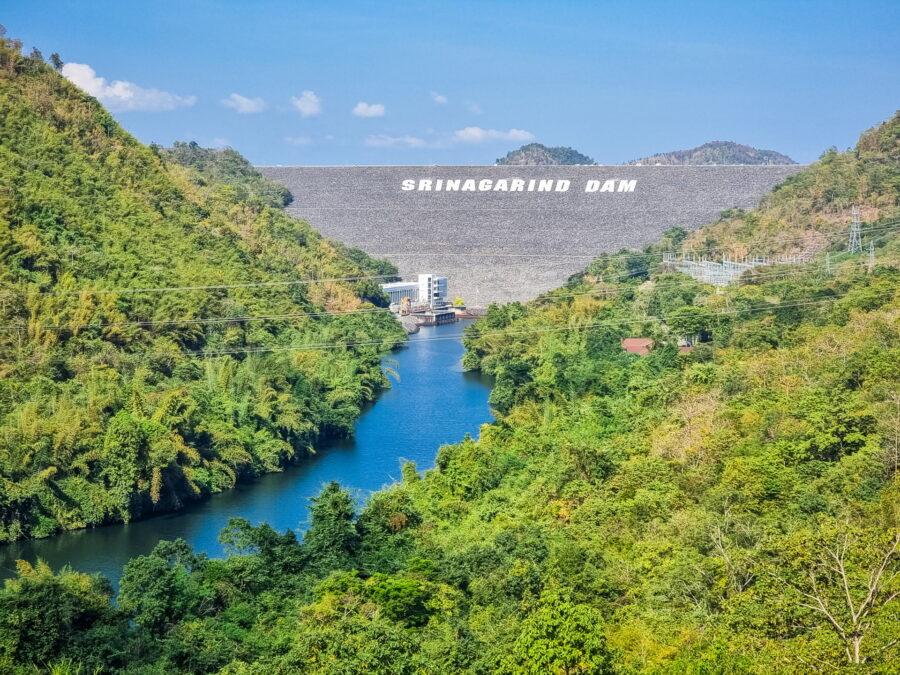

The park is less well-known than Erawan National Park, yet it offers a wilder and more peaceful setting, while covering a much larger area on both sides of the lake. It features several limestone caves, such as Nam Mut Cave, viewpoints over the lake such as Samphao Thong Chedi Viewpoint, and of course other waterfalls, like Pha Sawan ou Pha Tad, the only other waterfall in this park that I had the opportunity to see, although it is located on the other side of the mountain.
I didn't have the opportunity to explore the rest, because you really need to plan an extra day for that, the isolation of the places lengthening the journeys (and just for Huay Mae Khamin, we already fill the day).
To give you an idea of the distances, just because two places seem close on the map doesn't mean they really are. For example, as the crow flies, Huay Mae Khamin and Pha Tad are separated by about twenty kilometers... but by road, it's already 56 km and almost 2 hours of travel, some sections being unpaved. This is also why Google Maps suggests by default a much longer detour (160 km, 2 hours 40) via the main road.
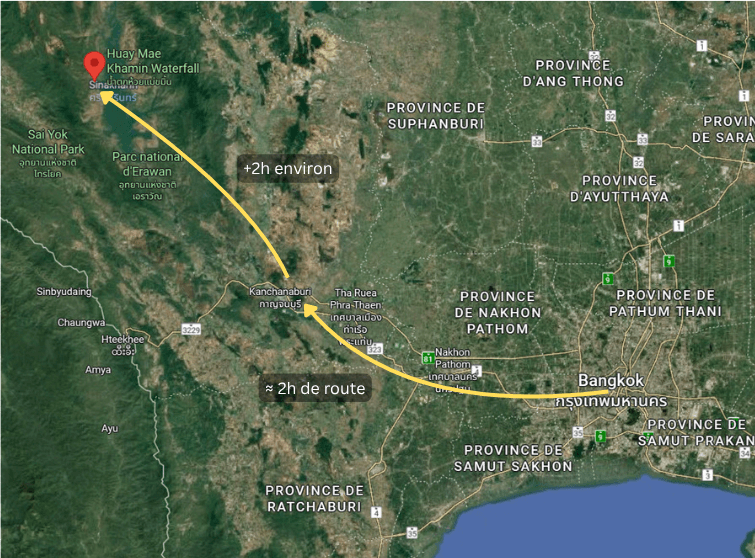
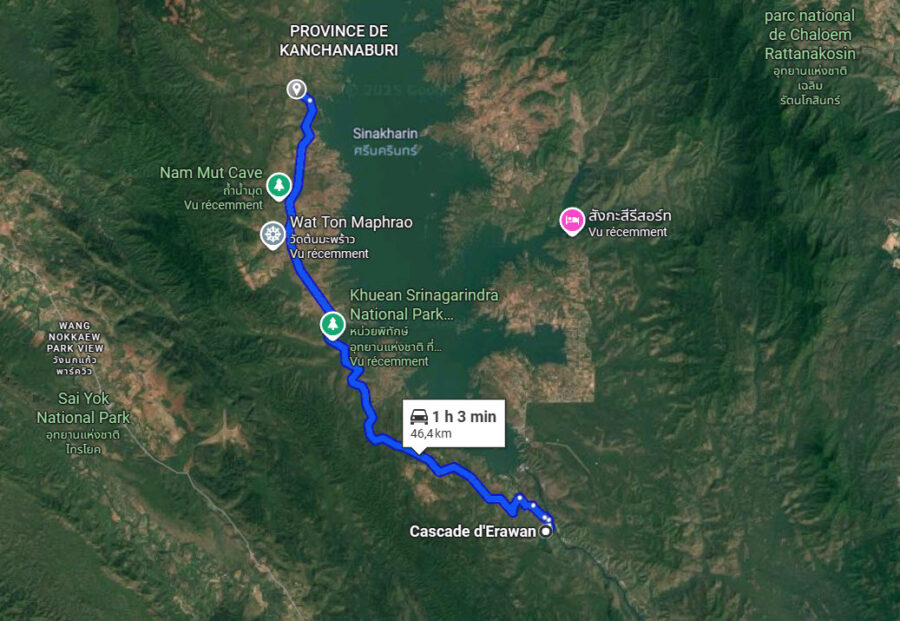
Its flagship site, however, remains the Huay Mae Khamin Falls, the focus of this article. And while access requires a bit of a journey, it's still relatively straightforward compared to other, more remote corners of the park. On the other hand, while Erawan National Park is technically feasible as a day trip from Bangkok, the same can't be said for Huay Mae Khamin—which reinforces the value of devoting a minimum of time to the region... you'll see, it makes all the difference.
7 levels of waterfalls in two parts
Arriving at the main car park, you will find all the amenities: a small local restaurant, toilets, showers... and as in many national parks, a campsite, with a little extra here, a view of the lake. The particularity of Huay Mae Khamin, is that we do not follow a continuous path going from level 1 to level 7. No: we arrive right in the middle.
The advantage is that if you don't want to see everything (which would be a shame after coming this far), you can stick to just one side. The upper part follows an almost flat path, but is longer: about 1,5 km from the main car park. The lower part is only 750 m long... but only downhill on the way there.
To see everything, you therefore need to make two round trips: 2 × 1,5 km + 2 × 750 m, or around 4,5 km in total. Allow at least 1 hours to see all the waterfalls.

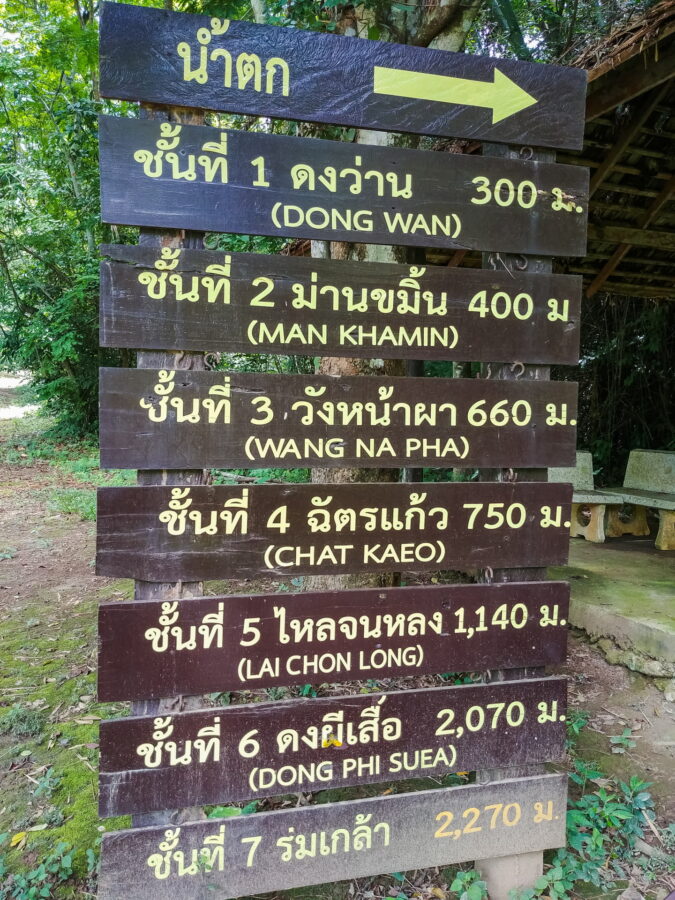
If you want to discover them in order, know that there is also a camping area on the lower part, with another local restaurant (Pinprai Restaurant – Pa Yud Huai Mae Khamin Waterfall). This can serve as a starting point. Unless you have a driver who can pick you up at the top, you will have to return to your vehicle anyway: in the end, the distance will be the same as from the main area.
Looking at all these camping areas and bungalows, one might wonder if the site is really busy. In reality, even if it is generally less visited during the year—especially by foreigners who prefer Erawan (due to lack of time or because they are unaware of the existence of Huay Mae Khamin)—it can become very lively during long weekends and during the dry season, from November to February, when locals come in large numbers to enjoy the national parks.
The division and names of the waterfalls are as follows (distances calculated from the starting point of the campsite in the lower part):
- Lower part
- Dong Wan – first level (330 m)
- Man Khamin – second level (400 m)
- Wang Na Pha – third level (660 m)
- Upper part
- Chat Kaew – fourth level, where the parking lot is located (750 m)
- Lai Jon Long – fifth level (1 m)
- Dong Phi Suea – sixth level (2 m)
- Rom Klao – seventh and final level (2 m)
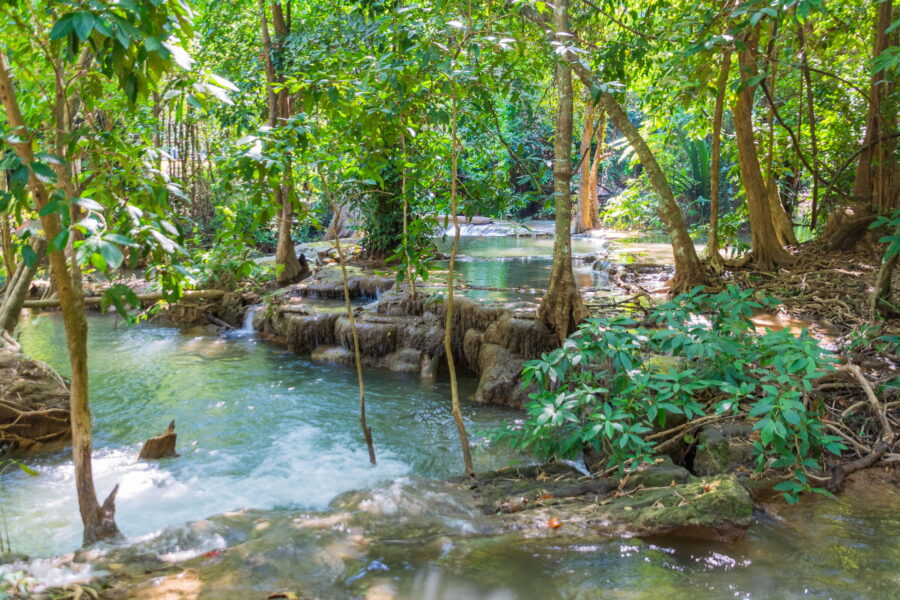
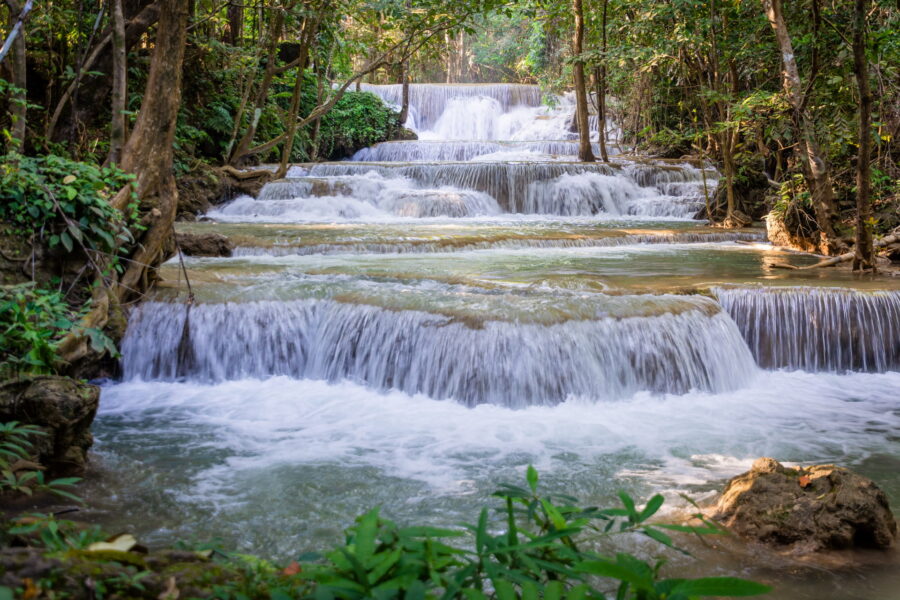
Lower part: levels 1 to 3
Note that the falls actually extend beyond the official “number 1.” If you start from the campsite below, you will already come across a few small intermediate waterfalls before reaching Dong Wan, level 1. In the end, there are more than 7 levels to admire.
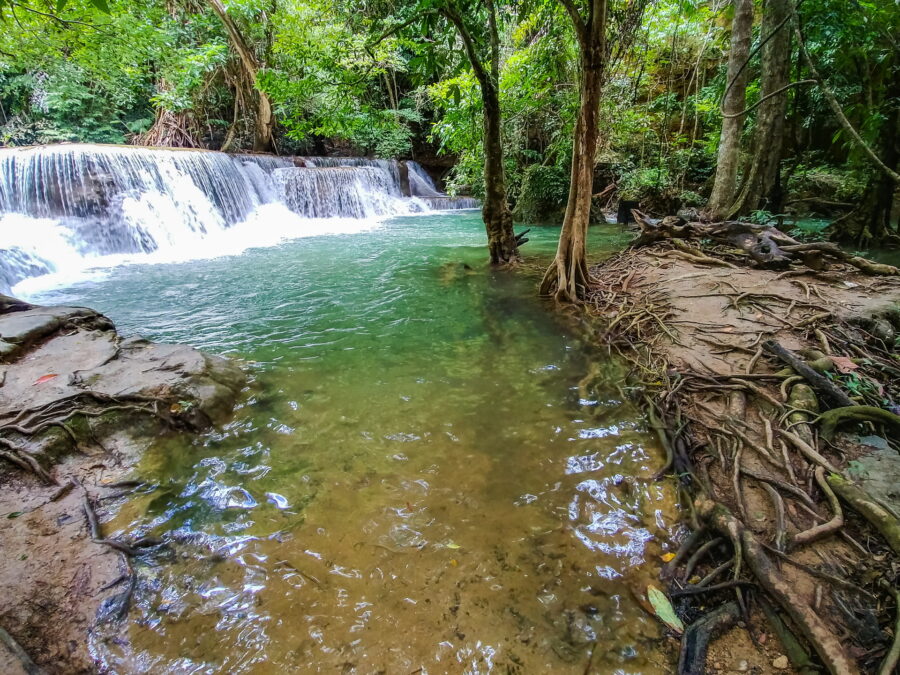

You might think that each numbered level corresponds to a waterfall with a pool or access at the foot, suitable for swimming. But levels 4 and 5 are perfect counter-examples. Who knows why this numbering... But whatever, let's begin the tour.
Level 1 – Dong Wan
If you visit in order, this is the first numbered waterfall you'll see upon arriving at the site. Dong Wan waterfalls spread over several tiers. From the vantage point, you can clearly see the series of small steps, creating a curtain of water harmoniously layered in the middle of the forest. The area is well shaded, with clear water that spreads out into a wide, shallow pool at the foot of the falls.
This is a great place to quickly cool off before continuing to the upper levels. In the dry season, the flow remains moderate but constant, offering a clear view of the rock strata.
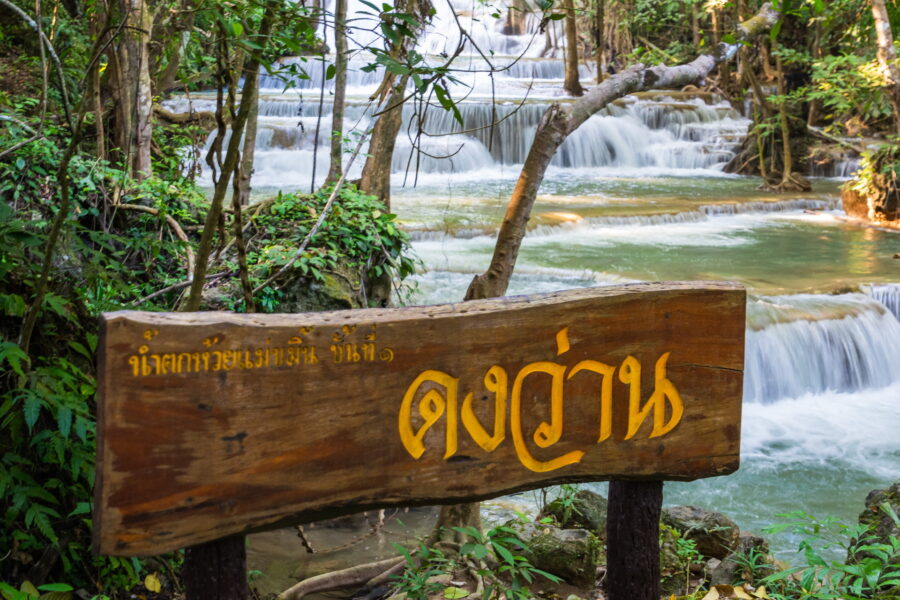
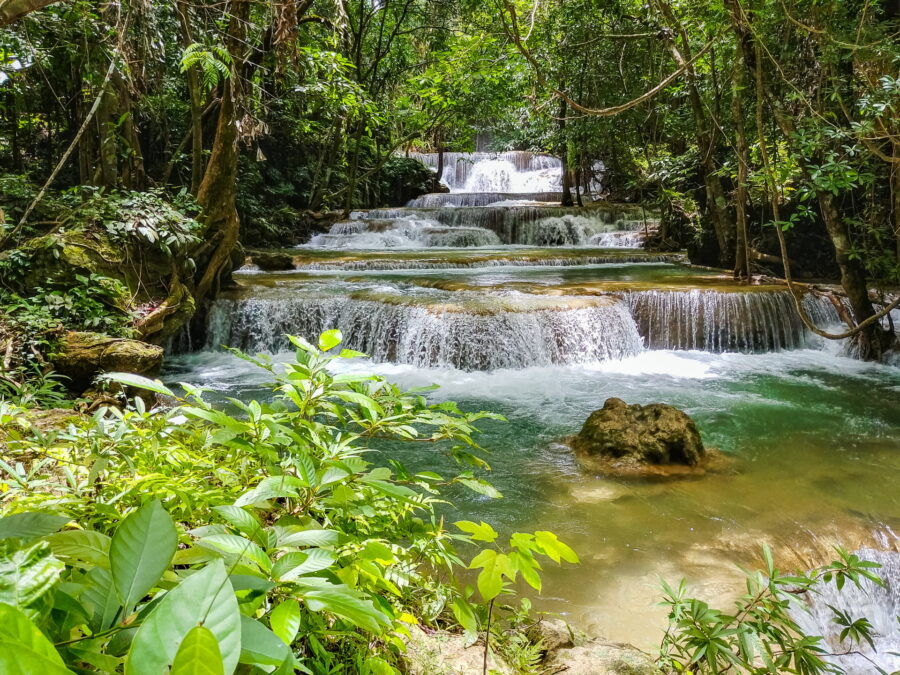
Level 2 – Man Khamin
Here, the water winds its way between the trunks and roots before flowing into several small parallel waterfalls. The area is more shaded, almost intimate, and the light filtering through the canopy creates a gentle atmosphere. The upstream pool is quite large and calm, perfect for dipping your feet or sitting on the smooth rocks. It's also a lovely spot for photos, with the waterfalls in the background.
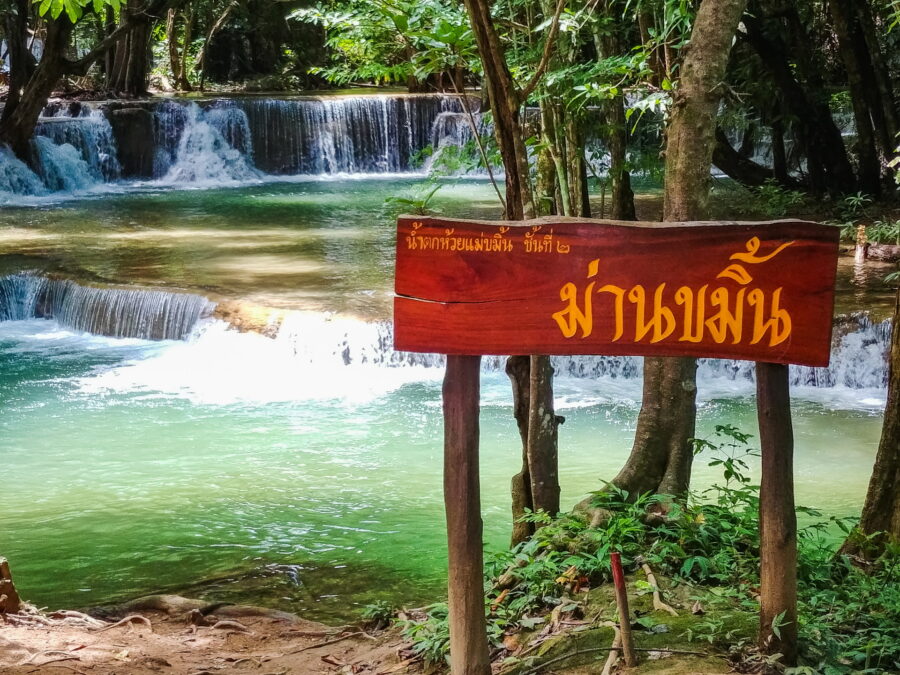

Level 3 – Wang Na Pha
Wang Na Pha is distinguished by a powerful curtain of water falling over a large rock face, forming a pool perfect for swimming. Access is easy and the setting, with its trees framing the waterfall, is particularly photogenic. It can be admired from the front, at the water's edge, or from a small, secluded nook that offers a panoramic view. It's a spot where you can easily spend time, alternating between swimming and taking photos.
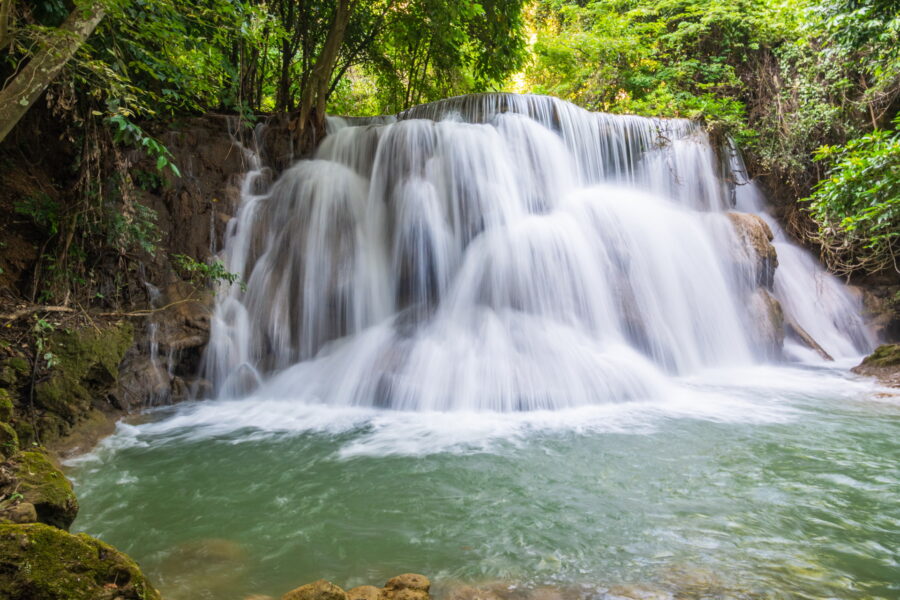
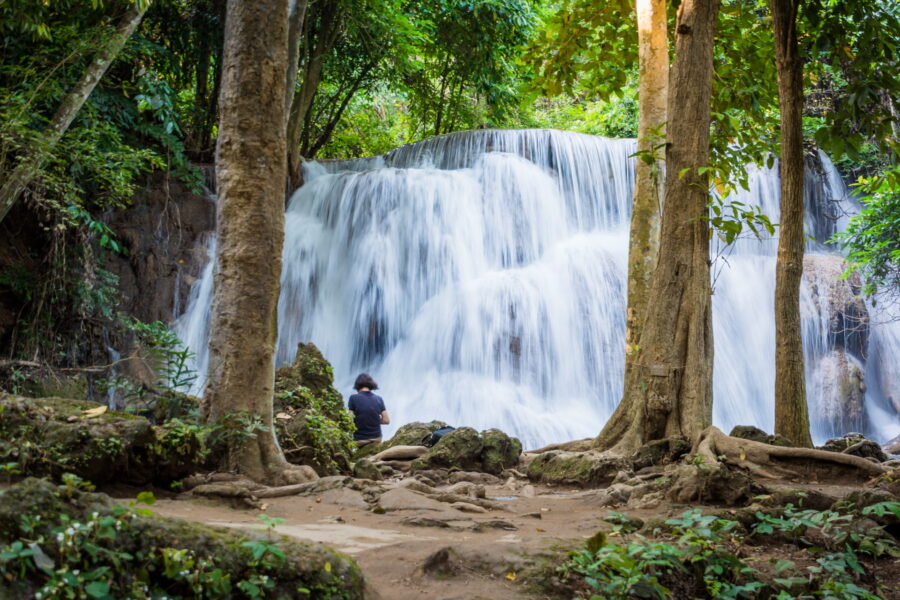
Parking and main camping area: level 4
While it's a slow but steady climb up to this point, the steepest part of the route is between levels 3 and 4, in the form of a long staircase that leads to the lawn set up for camping. I come across several colorful tents, some under arbors for a bit of shade. And as mentioned above, this is also where we find the parking and the restaurant area.
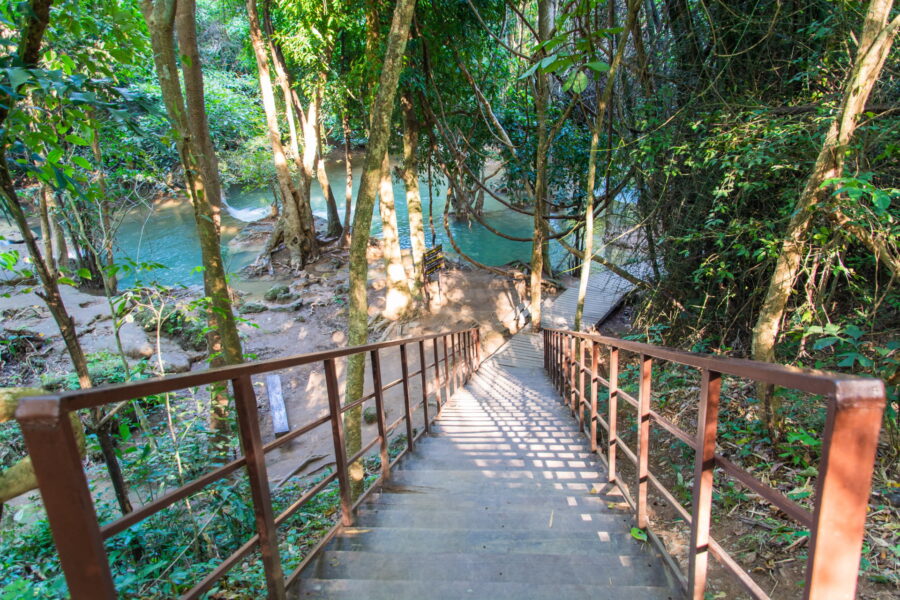

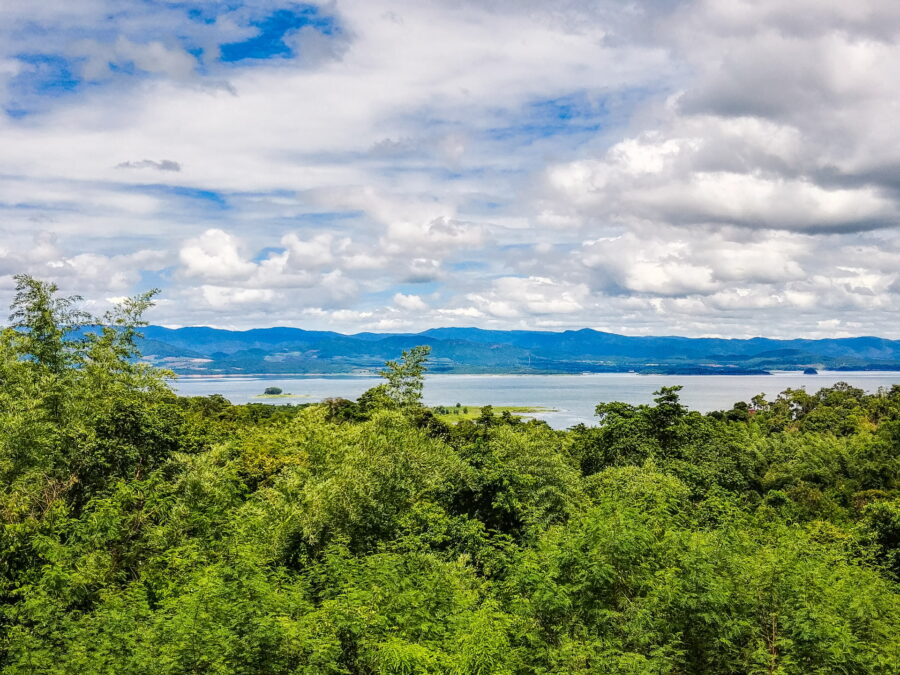
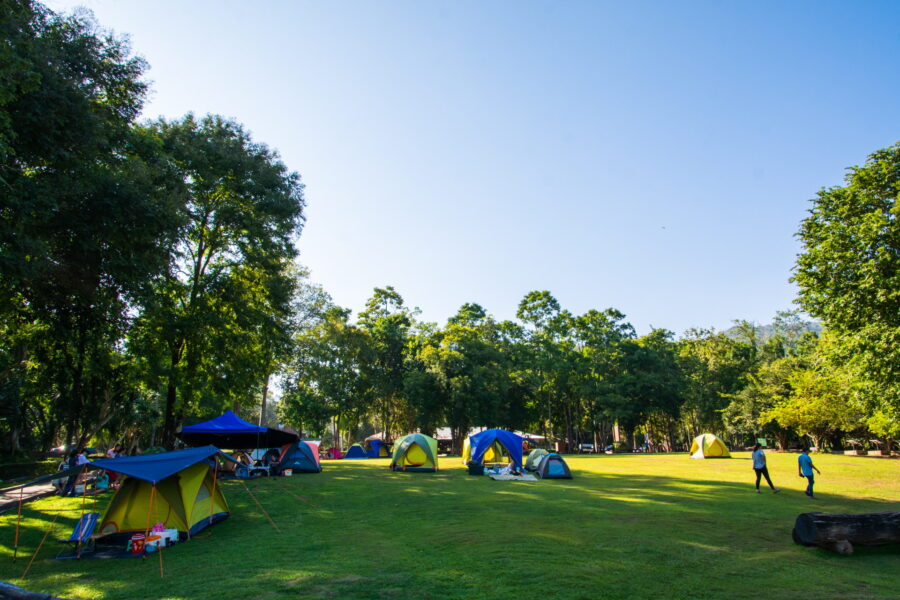
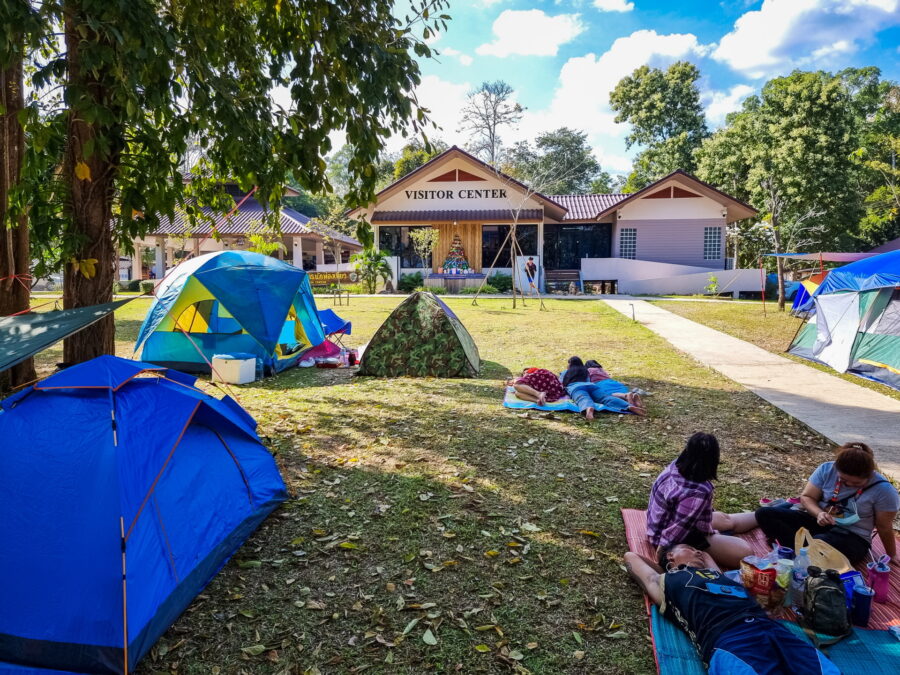
Level 4 – Kaew Cat
This is a bit of a showcase waterfall and probably one of the most spectacular spots in Huay Mae Khamin. Here, the water unfolds in several wide tiers, forming large curtains that are layered one above the other in a very green setting. The main viewpoint, slightly elevated, allows you to see the entire succession of levels.
Right next to the parking lot, you have direct access to a platform that's ideal for taking beautiful photos. However, as beautiful as it is, swimming isn't possible here: you can only enjoy it with your eyes. As a bonus, from the campsite, you can also see Lake Srinagarind in the distance.
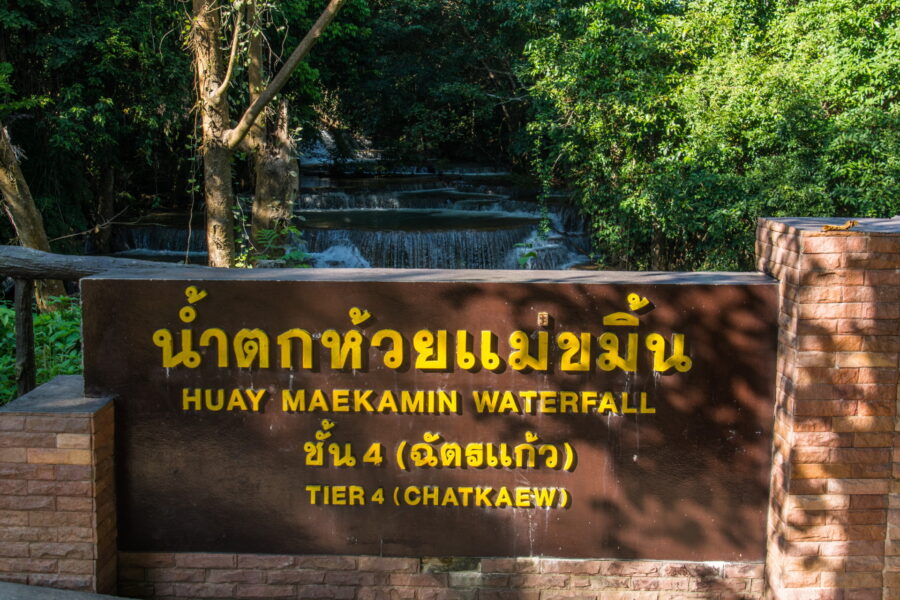
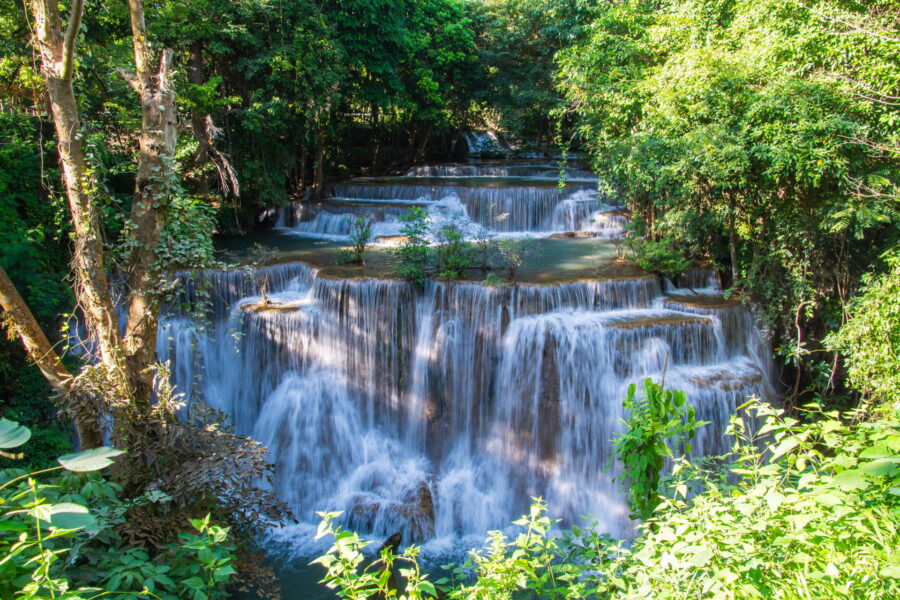
Upper part: levels 5 to 7
After level 4, the trail continues along the river through dense vegetation. Signs clearly indicate the remaining distances to levels 5, 6, and 7, making it easy to find your way.
We alternate between shaded areas under the bamboo and more open passages, sometimes with small waterfalls or rapids in between, without a real pool for swimming. The walk remains easy: the path is well marked and often runs alongside the water, offering some photogenic viewpoints on the natural plateaus formed by the rock.
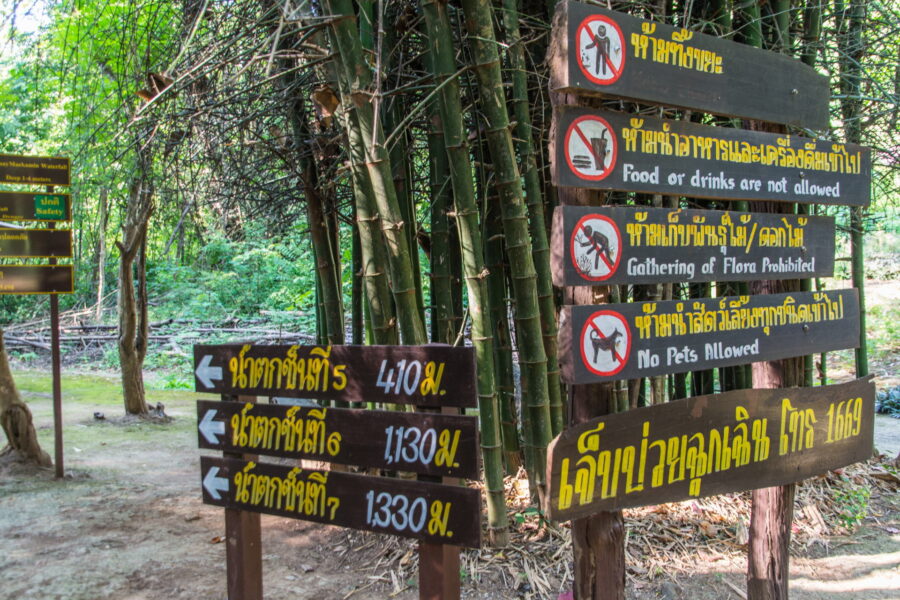

Level 5 – Lai Jon Long
If it weren't for the observation deck, Lai Jon Long would easily go unnoticed, as it's one of Huay Mae Khamin's most discreet levels. Here, the water flows gently over a few rocky steps before reaching a tiny pool. Nestled in the forest, the place is intimate and shaded. It's a far cry from the large spaces of levels 3 or 4, and so you pass through it quite quickly.
Level 6 – Dong Phi Suea
Dong Phi Suea marks the penultimate stop before the highlight, so to speak. Here, the water spreads over several wide limestone steps before plunging into a shallow pool, with turquoise reflections in good weather. The whole place is always shaded, surrounded by dense vegetation that gives a special character to the place.
In my opinion, this is one of the most photogenic waterfalls, with its harmonious shapes and different levels creating small natural pools. Perfect for a short break before tackling the last level!
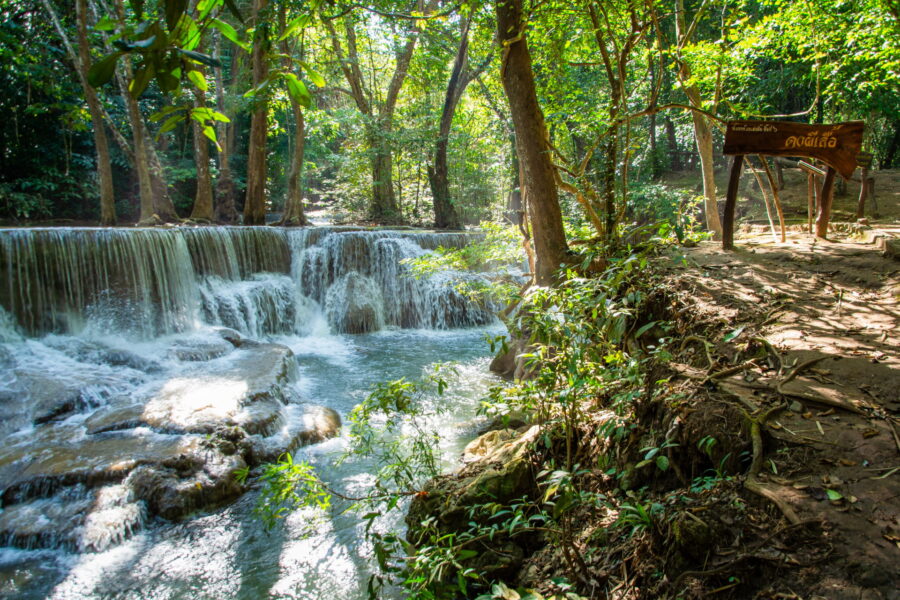
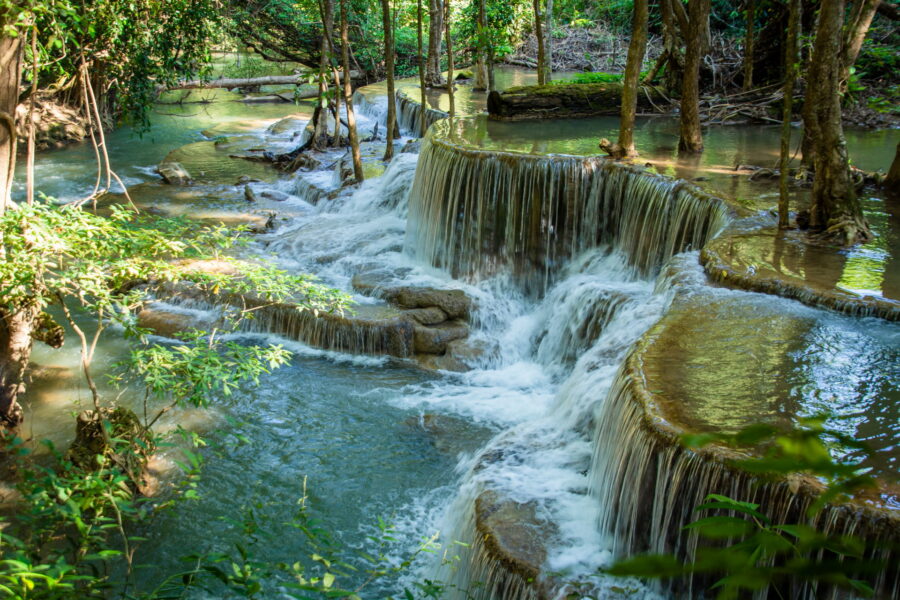
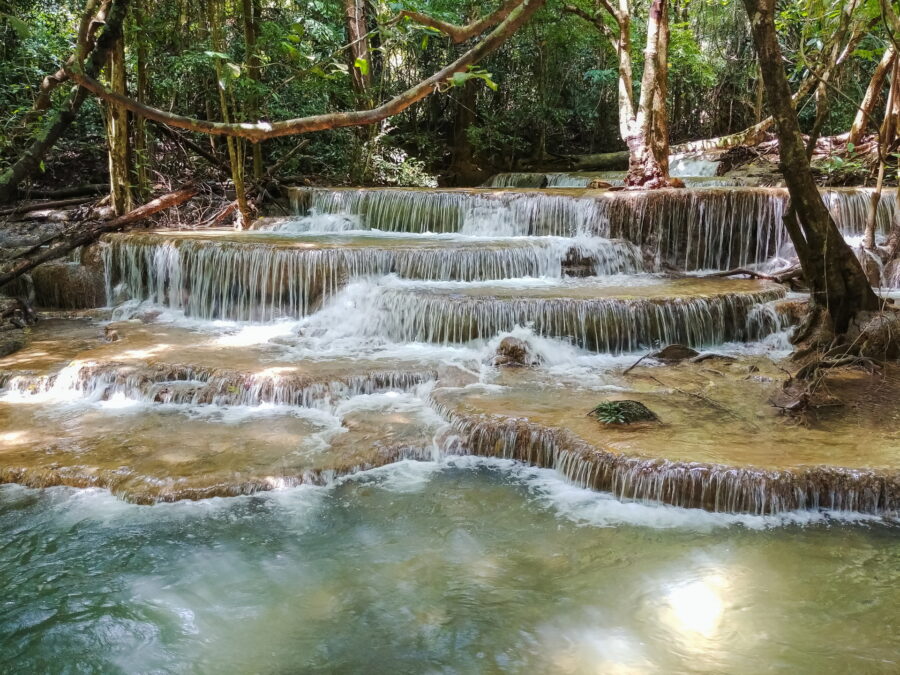
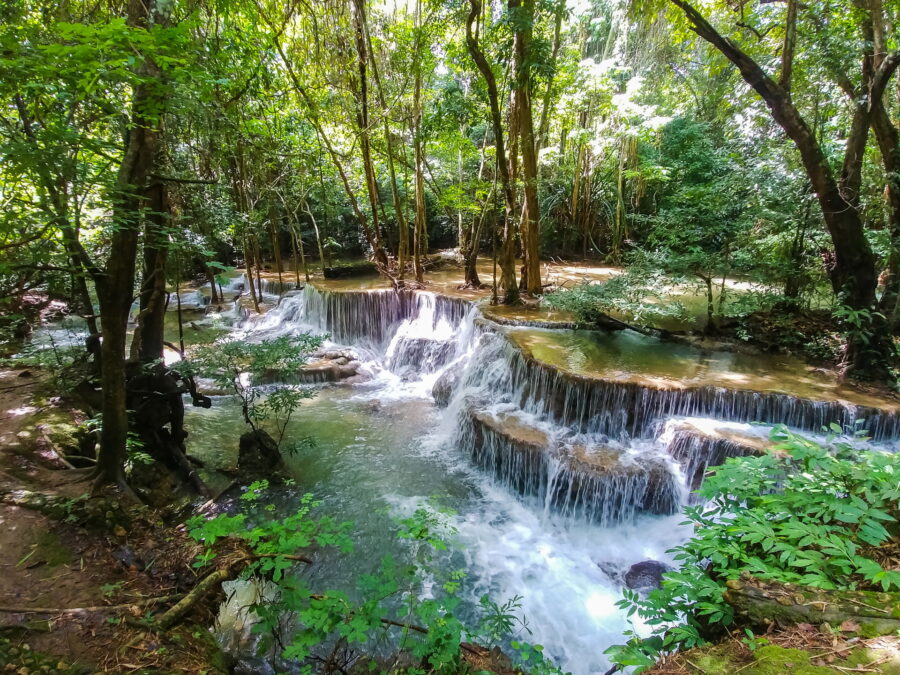
Level 7 – Rom Klao
After another 200 m, the forest reveals the last level: Rom Klao. The waterfall unfolds in a wide white curtain that stretches across the entire width before merging into a vast pool with turquoise reflections.
The spot is quiet and shady, with large roots lining the shore and the light reflecting off the water. With its vast expanse and clear water, it's one of the most pleasant spots for swimming.
If you've completed the previous six levels, you can savor this moment as a reward. I happened to come across a few locals sitting on the flat rocks, and even then, during the high season (New Year). The atmosphere is always incredibly privileged... to the point where it's easy to lose track of time.
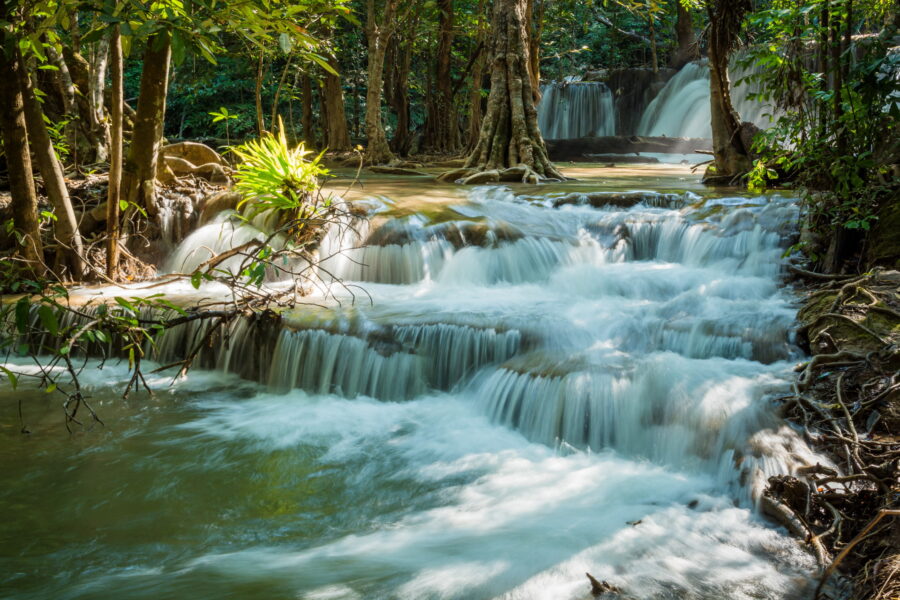
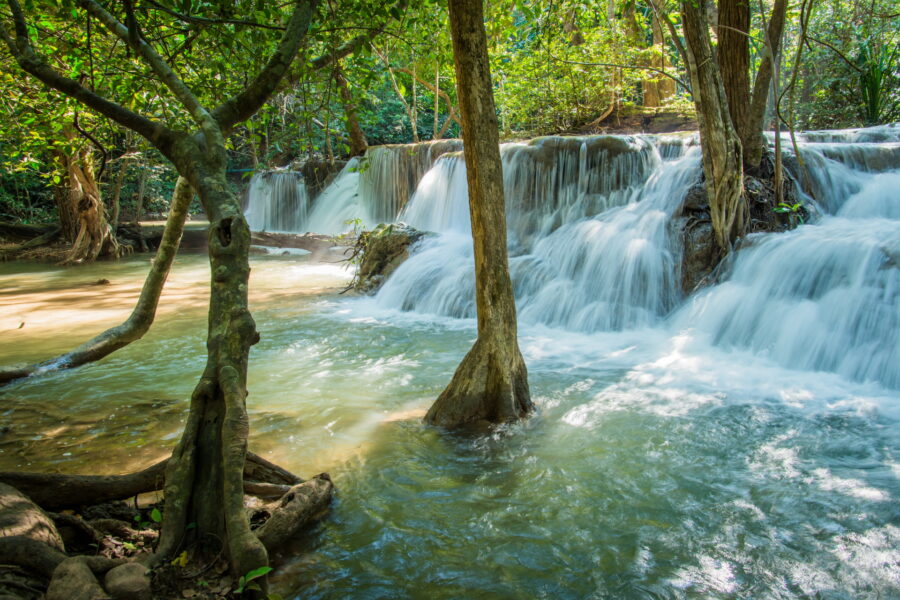

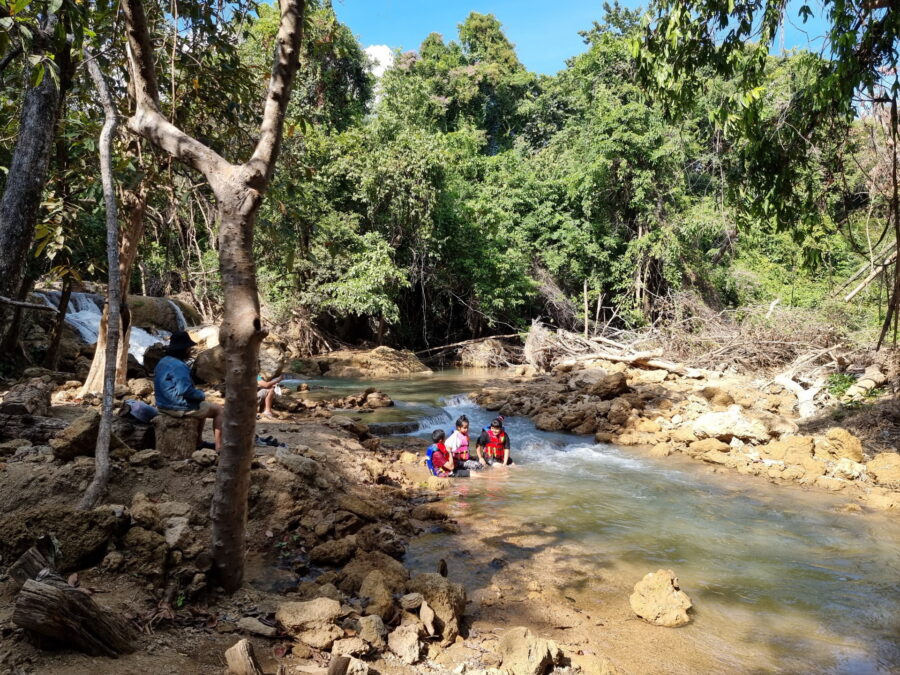
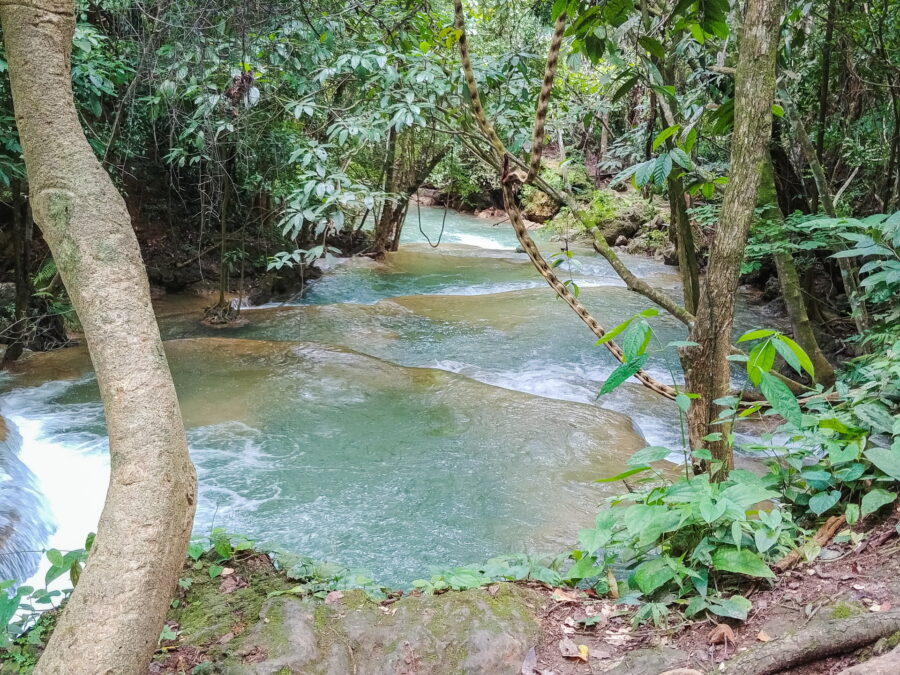

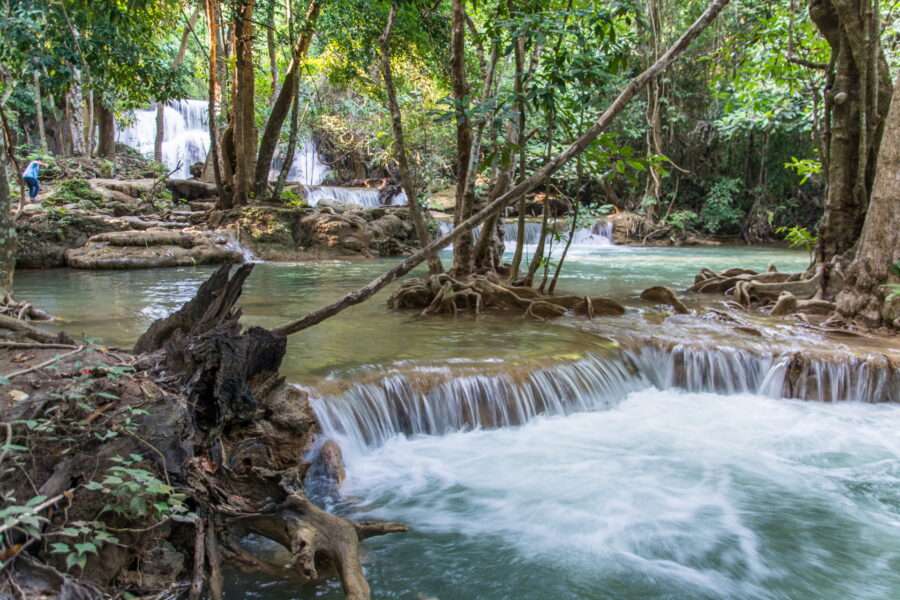
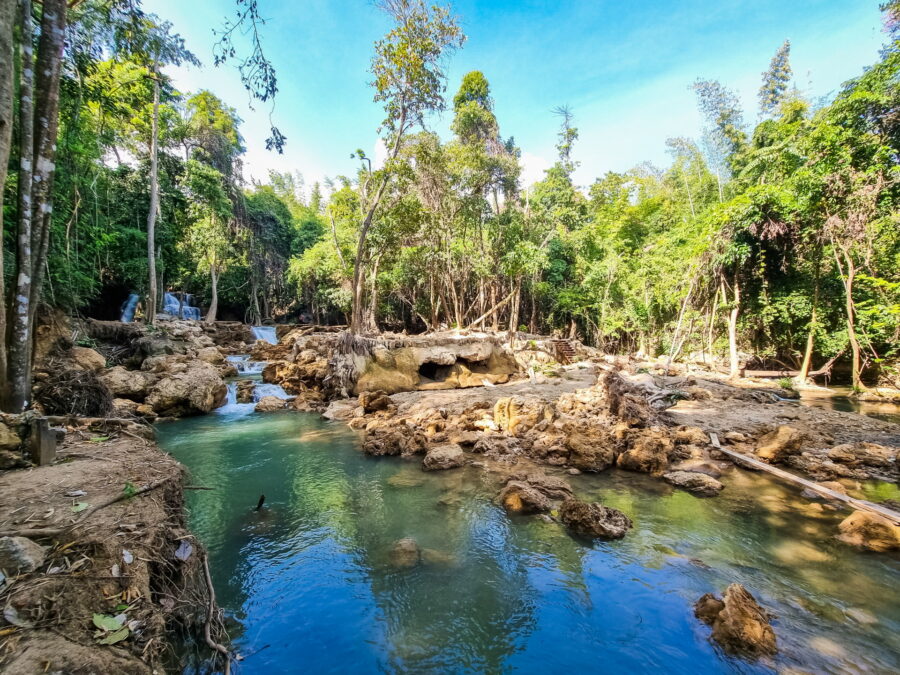
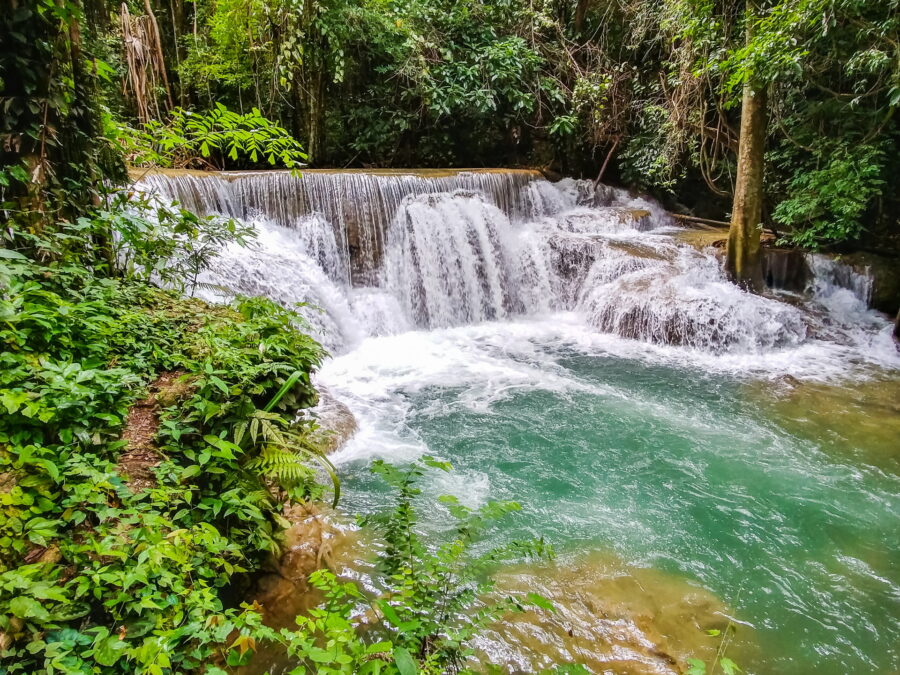
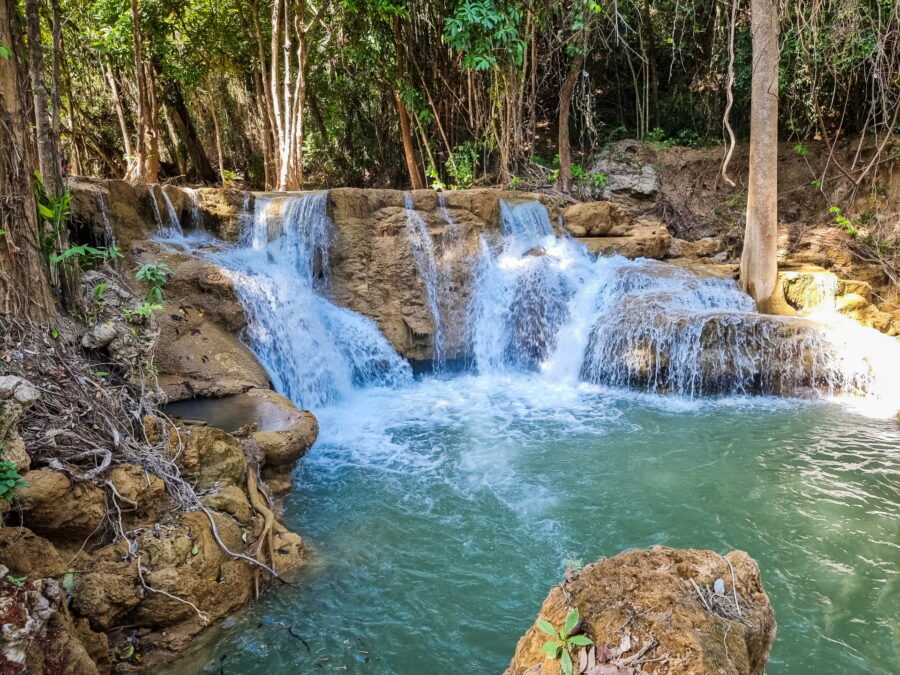
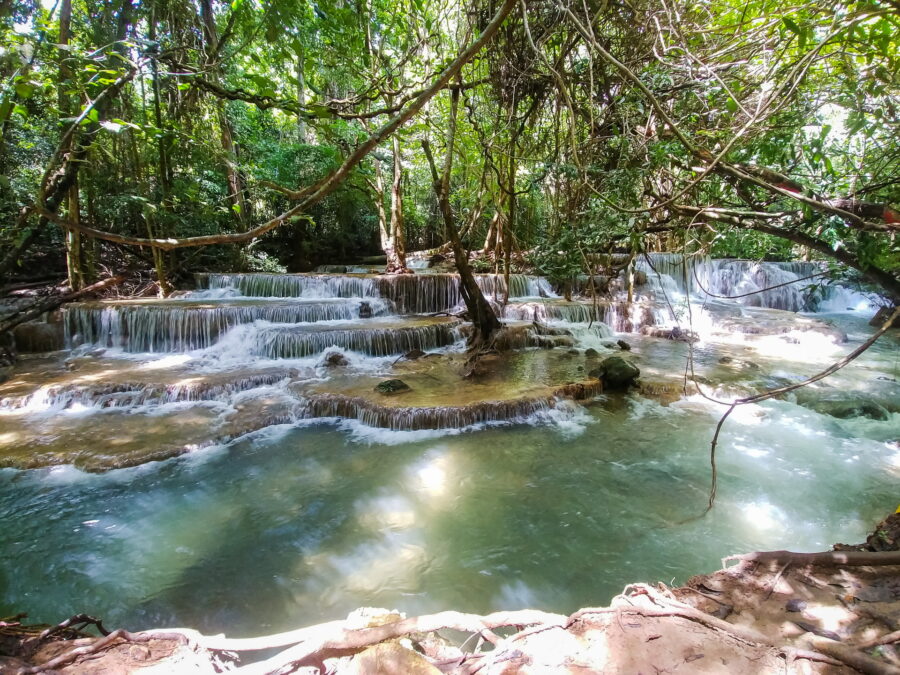

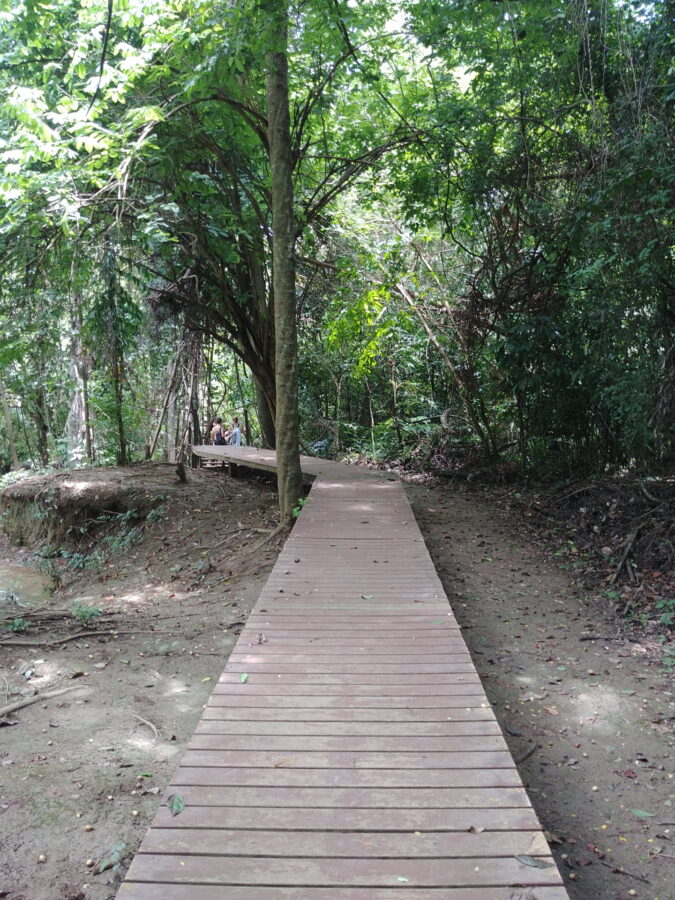
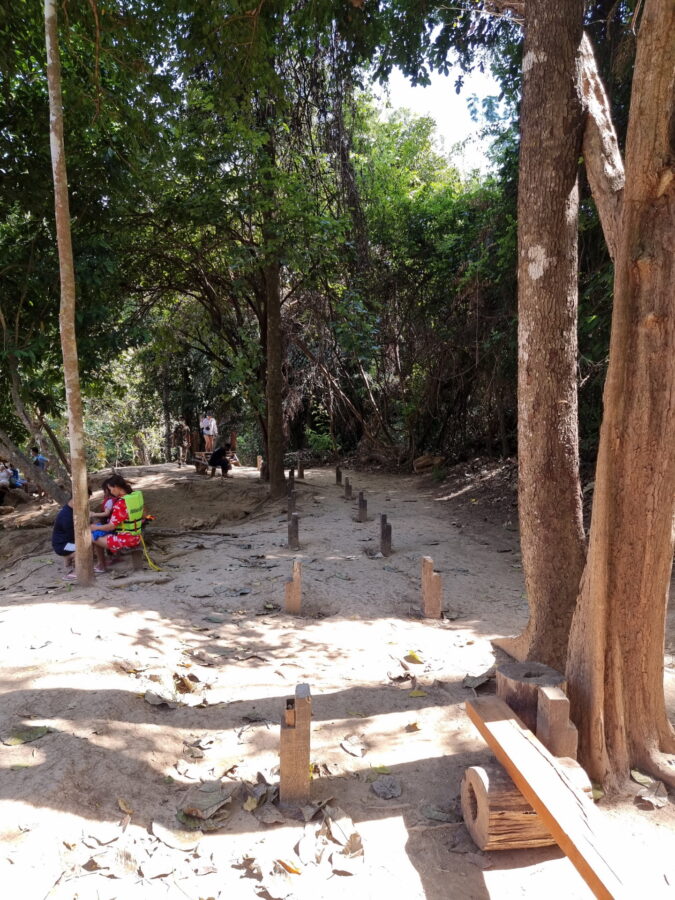
Crossing the Srinagarind Lake
To vary the route a little, you can cross Lake Srinagarind by taking a small local ferry. The advantage: arriving on the same bank as the falls and leaving by the other side, without taking the same route again. Personally, I always do this after the visit, to loop around the dam.
The embarkation point is 8,5 km north of the national park. The access road is unpaved, but in the dry season it's easily accessible by city car; in the rainy season, an SUV or pickup truck is preferable. This isn't a "tourist" ferry but a local service, used mainly by locals... and a few curious people like me. The boats are rustic, but the crossing is worth the detour, especially in the late afternoon, when the golden light reflects on the water. Allow about an hour for the journey, plenty of time to enjoy the view of the green hills.
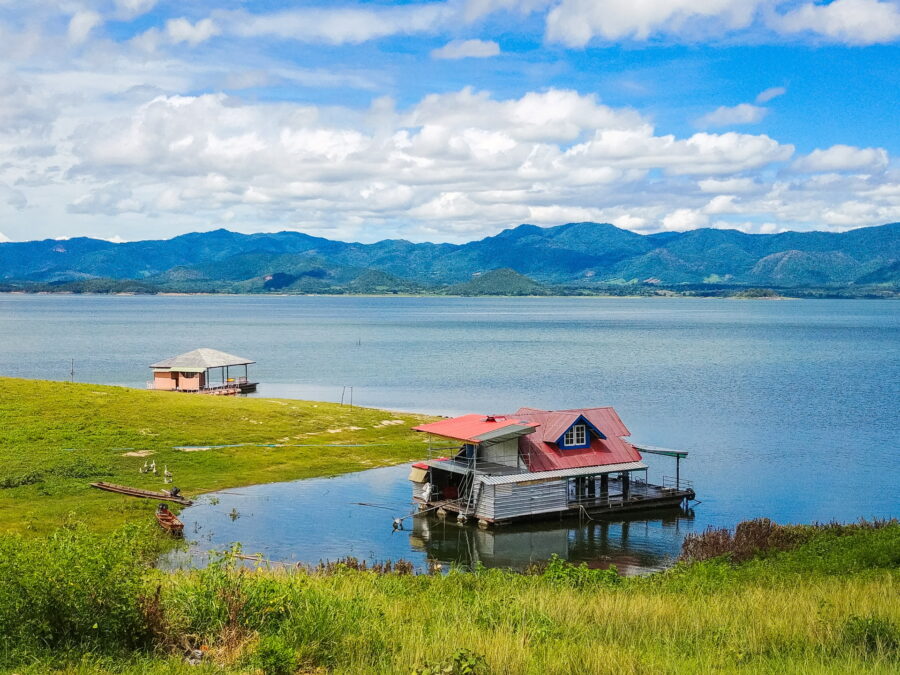
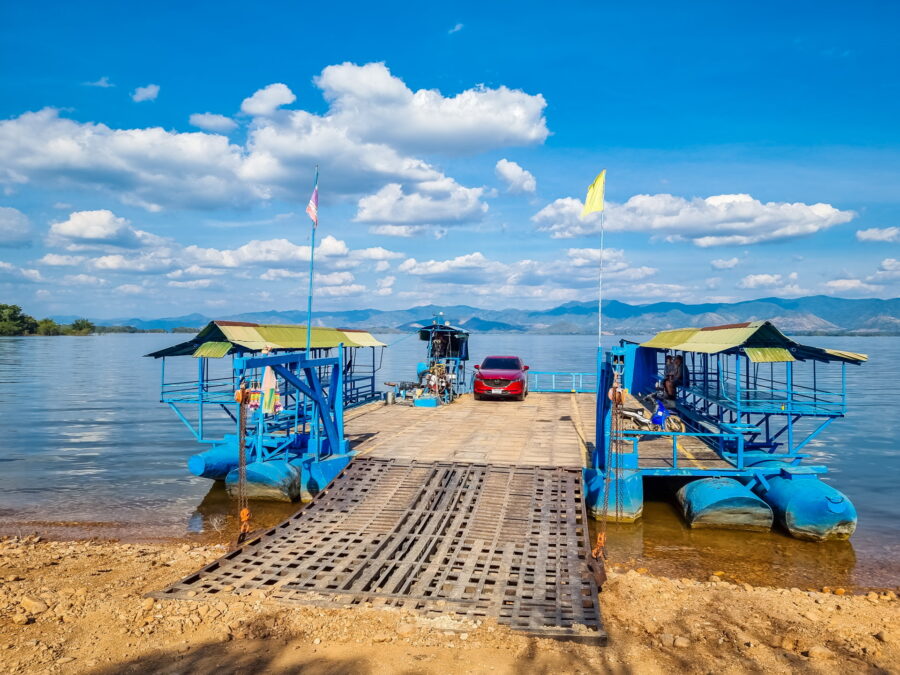
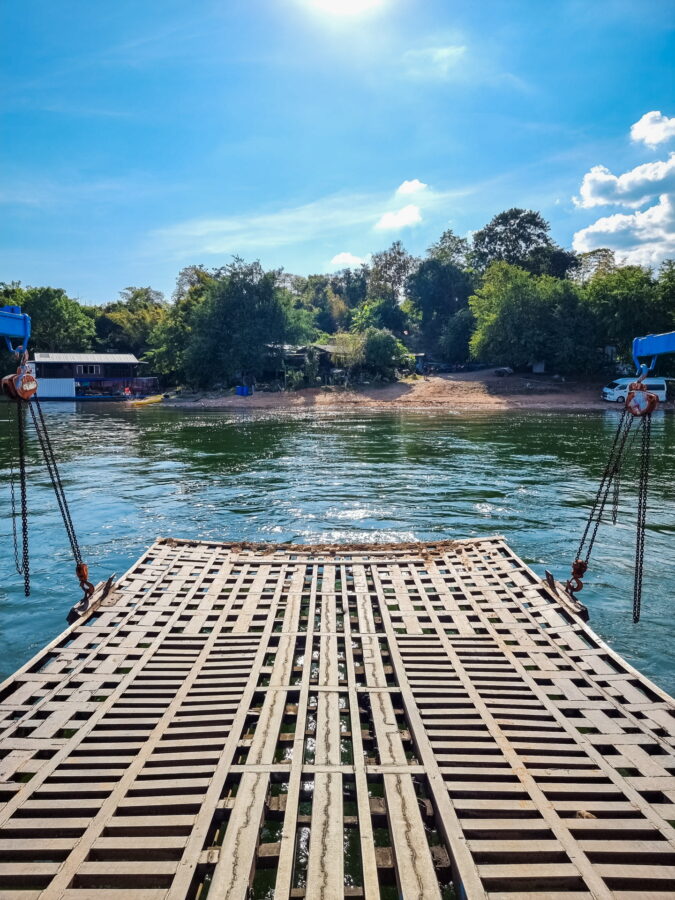
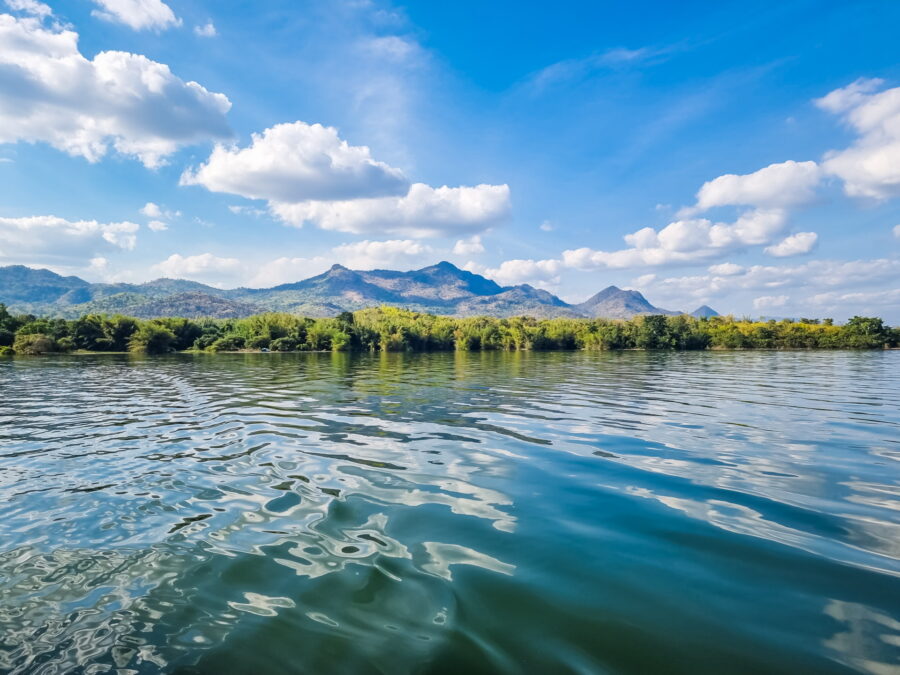
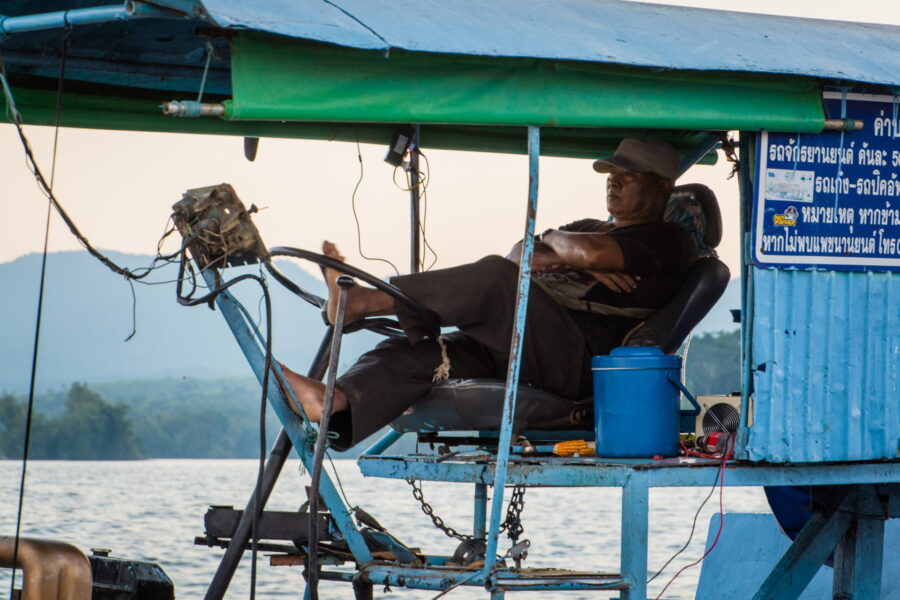
The fare is fixed: 300 ฿ per vehicle. With only two ferries in rotation, if you miss yours, you'll have to wait for it to return from the other side (about 1 hour). On the national park side, the wait can be an opportunity to visit the small Wat Somdet or grab a snack at the local grocery store by the lake. On the other side... there's nothing.
And while you're at it, there's also a second, shorter crossing, which you can cross using the same type of local ferry. There, it's only 900 m to cover compared to 25 km of turns by road. But let's be honest: it's mostly for fun, because between the time it takes to get to the dock, wait for the ferry, and load and unload vehicles, you don't really save any time compared to the main road that runs along the lake.
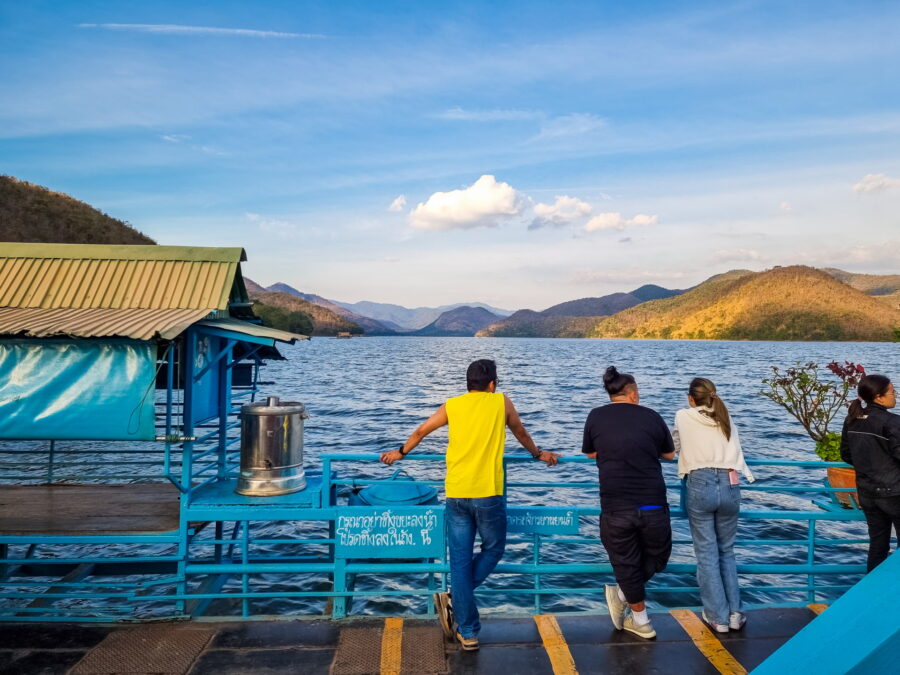
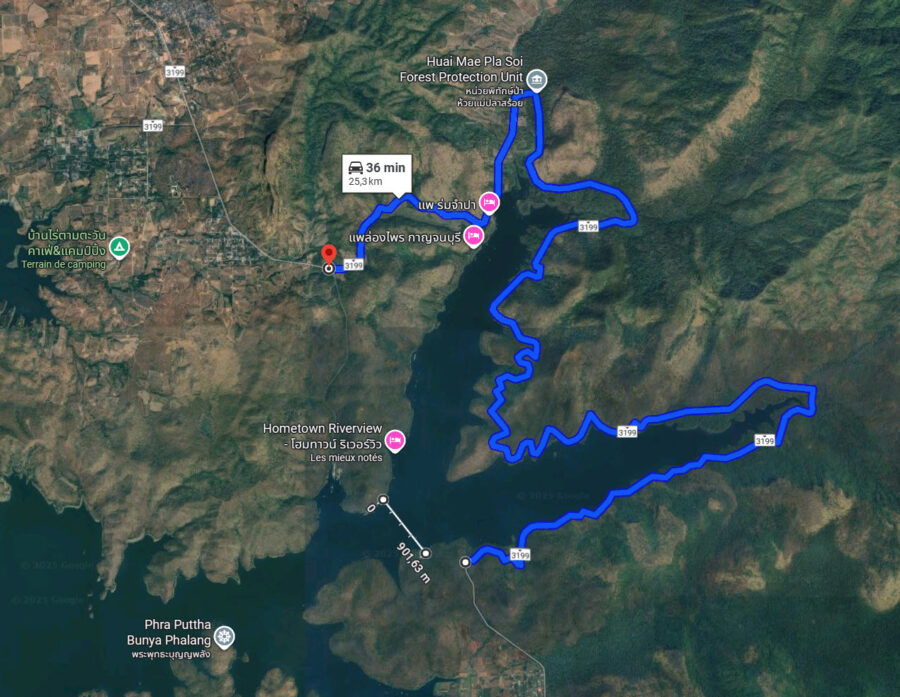
To help you visualize, here is a map showing the waterfalls, the piers and some possible stops on the loop around the lake (I'll talk about this a little more below).
How to get to Huay Mae Khamin Waterfall
Le Si Nakharin National Park It is not served by local transport, and organized excursions are quite rare. The easiest way is to come on your own or book a taxi for the day. To fully enjoy the falls, it is best to spend the night in Kanchanaburi the day before and leave early the next day.
From Bangkok
Allow about 4h of road from Bangkok. The easiest way is to first reach Kanchanaburi by minibus, departing either from the South Terminal (Southern Bus Terminal / Sai Tai Mai), or Mo Chit. Indicative price : 150 to 200 ฿.
Once arrived at Kanchanaburi, several options are available to you to join Huay Mae Khamin.
By scooter or by rental car
This is the most flexible option for managing your schedule. The road is in good condition and does not present any particular difficulties (apart from passing "beware of elephants" signs). Once you leave Kanchanaburi, count on about 2 hours journey, between wooded areas and sections along the lake, sometimes with “beware of elephants” signs.
- Scooter rental : 200 to 300 ฿/day
- Car rental : ~1 ฿/day (excluding petrol)
Where to rent?
- Scooters : Most guesthouses should be able to arrange a rental for you if you don't want to bother. Otherwise, you can find some at the end of River Kwai Road, a reference being OK Bike Rental.
- Cars : The agencies are located in the same area as for scooters, on River Kwai Road. A well-rated agency is Toz&tang Car Rental & Bike Rental, which also offers two-wheelers and Chang Car Rental (ช้างรถเช่ากาญจนบุรี), closer to the River Kwai Bridge, also with scooters available.
Precautions : helmets are mandatory, international driving licences are recommended, and avoid attempting this journey on two wheels if you have no experience. I detail all this in my article about driving in Thailand.
By taxi or car with driver
This is the most convenient option, especially if you're traveling with several people, especially family, or if you want to continue with other visits in the region. Drivers can wait for you on site for the duration of the tour; if necessary, most will agree to pick you up at a different point (e.g., starting from the lower part and ending at the main parking lot).
Duration from Kanchanaburi : approximately 1 hour to 1 hour 15 minutes
Indicative prices : 1 to 500 ฿ per day depending on the itinerary and negotiation.
Where to book?
- Local agencies : around the train station. Here again, River Kwai Road remains the place to go. A good address is CHANITA TAXI.
- Hotels / guesthouses : often in partnership with local drivers.
- Platforms : Grave ou Bolt — a priori, the Kanchanaburi → Huay Mae Khamin route is possible and costs around 1 ฿ one way, but the return journey still needs to be organised…
Trick : if you combine with another remote site, remember to negotiate a global rate from the start.
Sleeping in Kanchahaburi
If you're planning a day trip to the national park, staying in Kanchanaburi is the most obvious option. You'll find a wide range of hotels, both in terms of price and style.
My accommodation recommendations in Kanchanaburi:
- Le Good Times Resort – Ideally located near the lively street with its restaurants, on the riverside. Very good value for money, with swimming pool.
- Sabai@Kan Resort – Small, unpretentious, inexpensive hotel with a pool. A bit isolated, but there's a good restaurant across the street that I recommend.
- Chez Bure – Bure Homestay – While the pool isn't essential, this slightly out-of-the-way hotel offers modern rooms, a warm welcome, remains affordable and isn't too isolated.
Nita Raft House / Nita Guest House – Located at the end of the old town, opposite the old paper mill (mentioned in my article here), and not far from the recent skywalk overlooking the river. Perfect if you like small structures and small budgets.
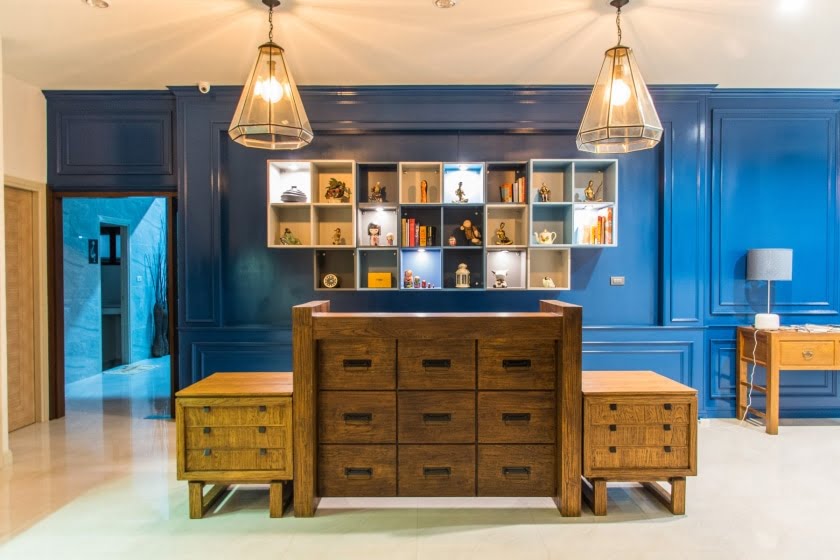

On the banks of the River Kwai
If you're driving, an alternative is to sleep on the banks of the River Kwai, just downstream from Erawan National Park, or around Lake Si Nakharin. This is a good option if you plan to explore the region beyond Huay Mae Khamin, without necessarily going back through Kanchanaburi itself.
If you're staying on the River Kwai, be aware that most hotels cater to Thai guests. However, some establishments can be booked through the usual platforms. Here are two that I tested:
- Erachon Raft Resort – I tested their “on land” building, but they also offer floating bungalows, the local attraction.
- Krupong House – The latest one I tried. A warm welcome, a beautiful view, but it's not super cheap, let's not kid ourselves.
Good restaurant address around there : (Krua Mae Chaba Erawan Kanchanaburi). Located on the roadside, very good and gargantuan portions for big appetites.
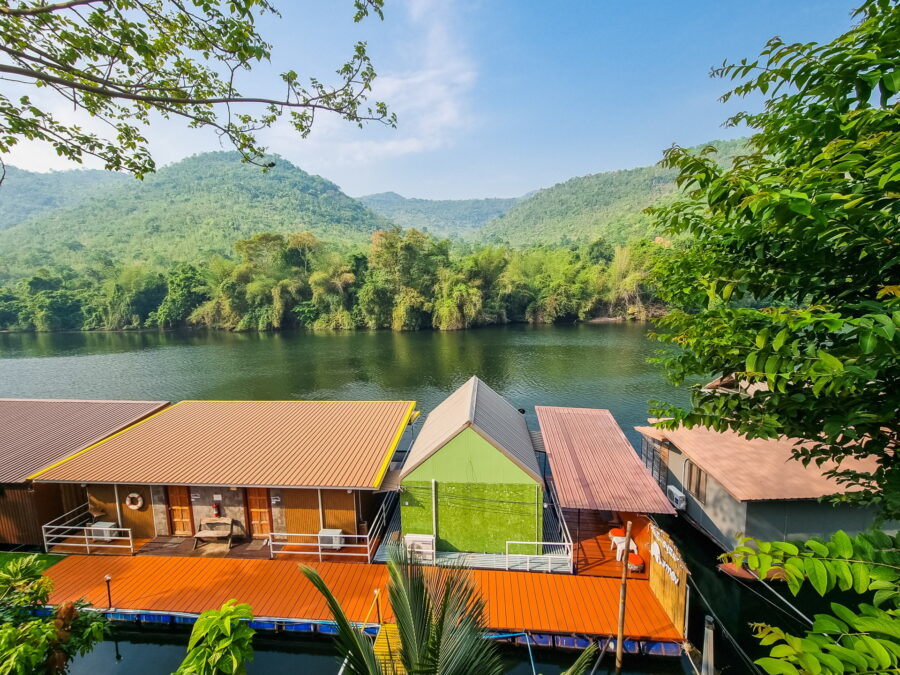

Around Lake Si Nakharin
If you prefer to stay around the lake, be aware that the vast majority of establishments cater primarily to a Thai clientele. Bookings are often made via Facebook (widely used here) or on websites exclusively in Thai. Many are designed for families, with rooms designed for 3 or 4 people and sometimes floating water features, which quickly raises the prices.
Among the fairly high-end “leisure” options, we can cite The Water Park Resort (with water park) or Raya Buri Resort (more relaxation oriented). For a more reasonable price, The Lake Country Hill is a simpler and more pleasant alternative.
And if you prefer to stay on dry land, near the dam, the Erawan Lakeview offers a good option to enjoy a view of the lake as you get closer to Huay Mae Khamin. I had tested a cafe restaurant less than 500 m away, the Khob Ang Cafe & Bed.

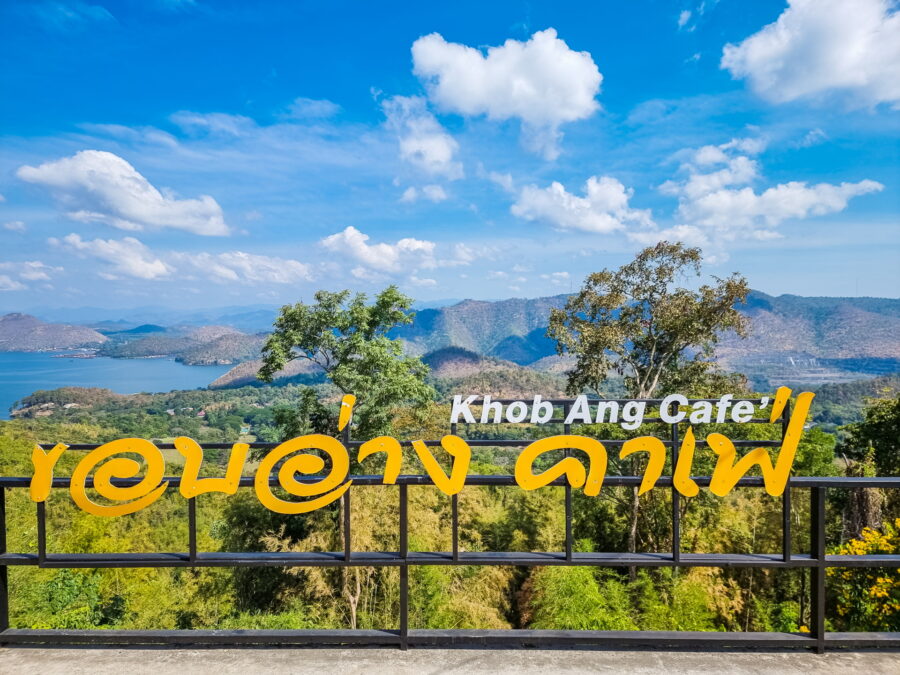
Sleeping in the park
As mentioned above, there are campsites on site so it is possible to sleep directly in the park. To book, go to the website DNP (Department of National Parks, the body that manages national parks) and select the park concerned, here: Khuean Srinagarindra National Park.
As a reminder, you cannot book from abroad: you must do so once you arrive in Thailand, and within 60 days before the desired date.
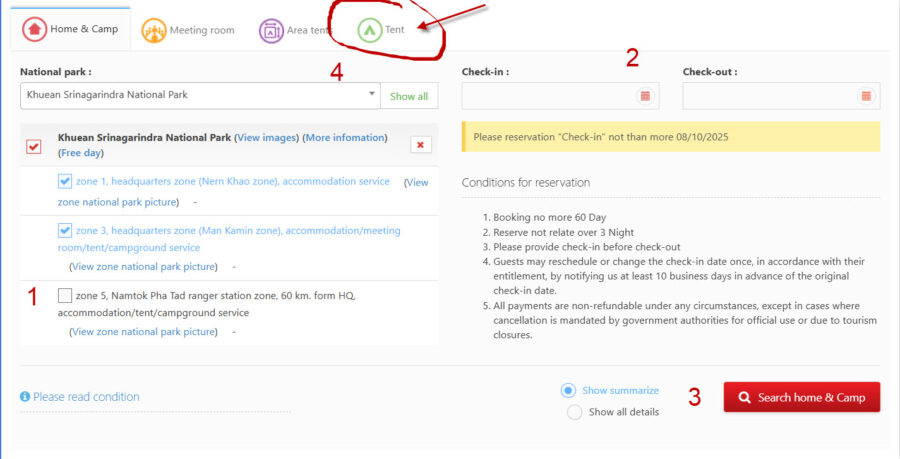
Please note : as the park is vast, several zones are proposed. The two mentioned in this article, near the falls, correspond to zones 1 and 3. So remember to uncheck zone 5 (marked by the number 1 on my screenshot).
Once you have made this selection, enter your dates (number 2), then click on the search button (number 3). By default, the page will display permanent accommodation (bungalow type).
Their prices range from 900 to 1 ฿ for 200 to 3 people (accommodations at 4 ฿ are reserved for groups). If you prefer to opt for the tent, click on the “Tent” tab at the top (number 3) and relaunch the search.
The prices are the same as those in Erawan: tent rental (225 ฿ per night for 3 people), mattress (20 ฿), pillow (10 ฿) and sleeping bag (30 ฿).
The procedure is not the most intuitive, and everything is only in English...But if ever, you have other explanations here.
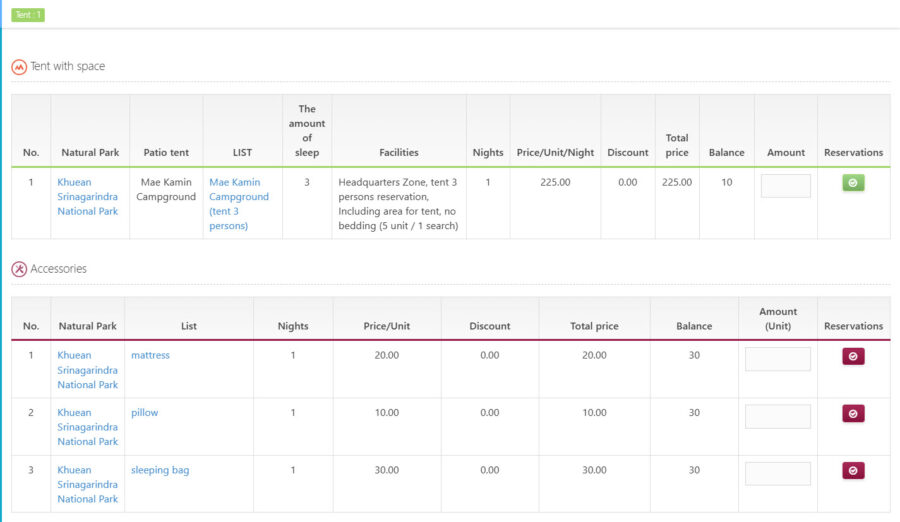
Other ideas for visits around Huay Mae Khamin
If you have some time, here are some ideas to combine with a visit to Huay Mae Khamin Falls, in order from the dam:
- Boat trip
On Lake Srinagarind, it is normally possible to sail, even if the options seem limited or not obvious to the uninitiated. There is a water ski club, Wake N' Wake Watersport, and since there are plenty of floating hotels around, I imagine they can organize trips on the lake. Otherwise, there is the experience of using the ferries as mentioned above. - Tham Phra That
One of the area's most notable attractions: a temple built against a cave. Access is included in the national park ticket—however, given its proximity, it seems to me that it's part of Erawan and not Si Nakharin, so check if you can. - Nam Mut Cave
Another cave, with its small temple. Not a must-see, but if you like the atmosphere of rural temples, it's worth a quick stop. - Mae Khamin Hot Springs
Well-appointed hot springs for relaxation. No volcanic landscapes or geysers, but a nice hot bath for circulation and recovery.
And if you are in the Kanchanaburi area, take a look at my article: 6 places to visit in Kanchanaburi between history and nature.
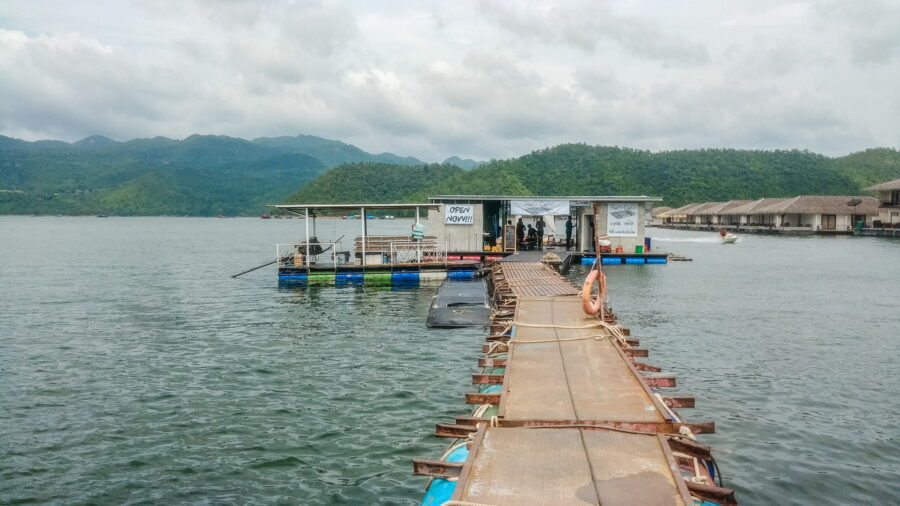
In summary: why come to Huay Mae Khamin?
Huay Mae Khamin is a bit like Erawan for insiders: seven levels of superb waterfalls, clear water, and above all, a much more peaceful atmosphere. Here, you really take the time to enjoy each pool, walk between the levels, and sometimes even find yourself alone facing the waterfall.
It's less accessible, certainly, but that's the "price to pay"—and that's part of the charm. You're in the heart of the park, away from the hustle and bustle, with the option to extend your exploration to the lake, the caves, or other natural areas. If you've already seen Erawan or are looking for an equally beautiful but wilder setting, the detour is well worth it.


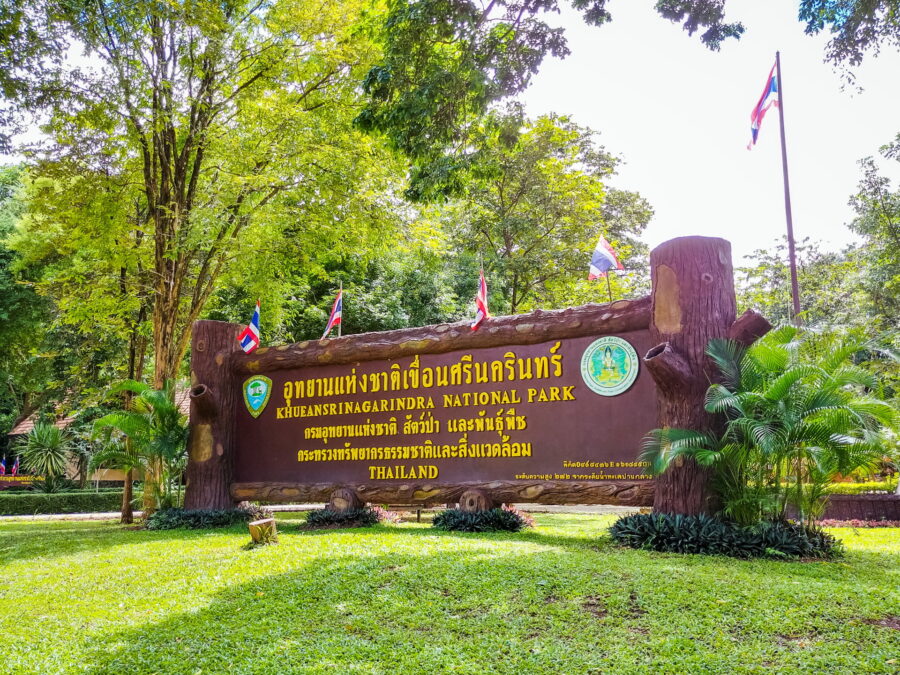




0 Comments
Thanks for this thorough explanation! Ill be coming down from Sukothai (on buses, etc) and will detour to these falls as they sound lovely. Very helpful info about other attractions in the area and hiring a driver, etc. Thank you!
Always glad to hear I can help, have a good time there!
Thank you so much for your detailed explanation. I visited before to Huay Mae Khamin, and loved it. My favorite falls in Thailand. I'm now exploring possibility of visiting by cycling and was particularly interested in the accessibility to the falls and on the lake by boat and ferry.
Hope you'll have a great time there!